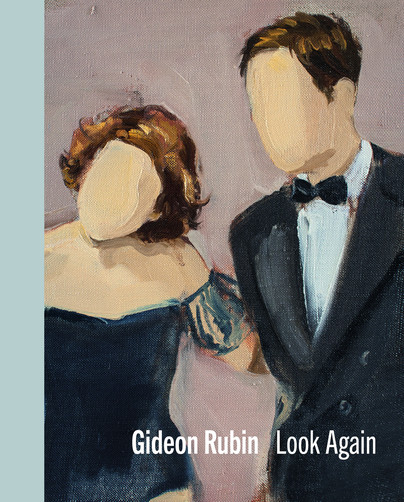
Format: Hardback
Pages: 228
ISBN: 9781910221525
Pub Date: 09 Nov 2023
Illustrations: 164
Description:
Gideon Rubin (b. 1973, Israel) is an artist who lives and works in London. Exploring identity, history and the inheritance of trauma in his enigmatic paintings, Rubin’s subject matter draws on myriad references such as film, popular culture, art history and literature, creating and investigating mythologies from the recent past.
Haunting and subtly theatrical, the paintings often feature faceless yet familiar figures. Underlying each work is Rubin’s expressive mark-making, muted palette and understated use of negative space and raw canvas. Look Again is Gideon Rubin’s second major trade monograph and showcases his substantial body of work since 2015, including studies of people in nature and scenes of solitude and intimacy. Author and art critic Jennifer Higgie discusses the evolution of his artistic style and his many influences—Balthus, De Kooning, Guston and Diebenkorn to name a few. Dr Matthew Holman’s expansive essay touches on Rubin’s cinematic characters, source material, his use of artistic conventions and engagement with sexuality. Holman investigates the meaning of redaction in Rubin’s work, both in his faceless portraits and in Black Book—a work in which Rubin used black paint to erase the contents of a 1938 English translation of Mein Kampf.Exhibited at the Freud Museum in London in 2018, Black Book is an exploration of what is left out of history, as much as what is remembered.Painting is essential to Rubin, as both a creative and therapeutic act; ‘a log keeping him afloat in the middle of the sea’, as he puts it. In conversation with fellow artist Varda Caivano, Rubin analyses his motivations, processes and doubts, and explains his surprising route to painting. Despite coming from a lineage of painters on his father’s side, it was largely his mother’s academic love of art that galvanised his artistic career, as well as a transformational experience in South America that opened him up to painting. An emotive poem by South Korean author Park Joon sheds further light on Rubin’s imagination.Rubin studied at the School of Visual Arts in New York and then at the Slade School of Fine Arts in London. He has had numerous international one-man shows and his works are included in a number of international private and public collections. Recent exhibitions include 13, Galleria Monica De Cardenas, Milan (2023), Dark Noise, The Kupferman House Collection, Israel (2023), Portrait without a Face, Fox Jensen Gallery, Tokyo (2023), a solo show at CASSIUS&Co., London (2023) and Living Memory, a two-person show with Louise Bourgeois in a Grade II listed chapel in London (2023). Rubin’s work has been featured in publications such as Artribune, San Francisco Examiner, Vestoj, Koln Kultur, Galerie Magazine, Südostschweiz Newspaper and Elephant among others. The publication has been supported by Galerie Karsten Greve, who represent Rubin’s work in Paris, Cologne and St. Moritz.
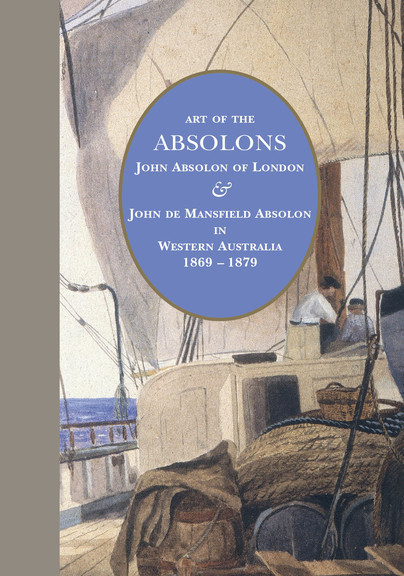
Format: Hardback
Pages: 192
ISBN: 9781925984071
Pub Date: 26 Oct 2023
Description:
A fully illustrated biography of London artist;Francophile and Western Australia colonial settler John de Mansfield Absolon painted superb ship-board scenes in an impressionistic style reminiscent of Edouard Manet's.
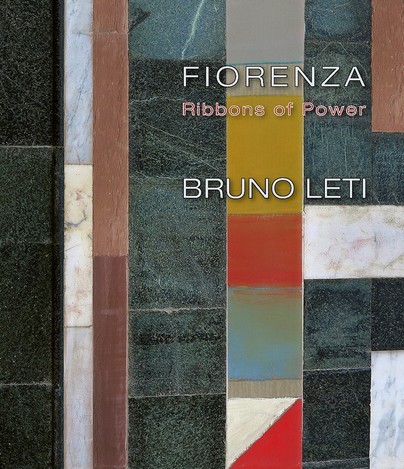
Format: Hardback
Pages: 136
ISBN: 9781925984989
Pub Date: 26 Oct 2023
Description:
Original fine-art prints inspired by the classical architecture of Florence.
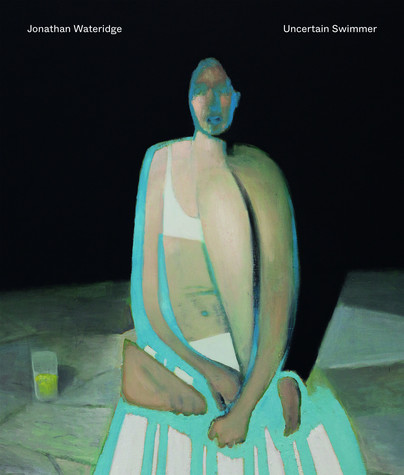
Format: Hardback
Pages: 208
ISBN: 9781910221518
Pub Date: 12 Oct 2023
Illustrations: 150
Description:
Uncertain Swimmer is the second monograph on the work of British artist Jonathan Wateridge (b. 1972, Lusaka, Zambia), presenting around eighty paintings and works on paper made between 2019 and 2022. Following on from the bodies of work Enclave and Expatria (2016–18), Uncertain Swimmer develops the artist’s interest in modes of representation and the legacies of twentieth-century modernist painting through a visual and social exploration of the motif of the pool, depicting swimmers and sunbathers, often by night.
Far from being an escapist environment of aspiration and privilege, Wateridge imbues the pool with a disquieting atmosphere, creating a cumulative feeling of unease and ennui among those present, now seemingly unsure of their world. The publication charts a marked evolution in the artist’s style from the realism of his earlier paintings with complex multi-figure compositions to more solitary, gestural and expressive works. His masterly application of paint takes new forms in the beautiful, curious and often haunting paintings and works on paper showcased here. Art historian and curator Marco Livingstone’s essay considers the change from Wateridge’s naturalistic paintings to the flattened, reduced shapes, forms and lines of the modernism- and abstraction-infused pieces he is making today. Francis Bacon, Edvard Munch and Paul Cézanne are among numerous art historical influences cited by Livingstone, who ruminates on the identity of the people in Wateridge’s portraits and the mercurial spaces they occupy, examining how Wateridge’s current critical preoccupations have transitioned from the autobiographical to more formal concerns.In the featured conversation between Wateridge and fellow painter Caroline Walker, the two artists discuss their overlapping experiences studying painting at Glasgow, as well as Wateridge’s fourteen-year break from painting until 2005. He eventually returned to the medium when he realised it excited him more than anything else. Wateridge elaborates on his fascinating painting process, staging shoots in studios with hired actors and using elements from the photographs in the paintings, often over a period of years. On his canvases, he will scrape back the paint and reapply it, frequently taking pictures of the paintings in their various stages; he will then print the photographs and draw over them to continue working out what he will do with the final paintings. For Wateridge, a painting works when it stops failing, and he embraces unforeseen conclusions.Jonathan Wateridge has recently exhibited with the Hayward Gallery, London; Nino Mier Gallery, Los Angeles, New York and Brussels; TJ Boulting, London; Galerie Haas, Zurich; Pace Gallery and HENI, London. Wateridge's art is in the collections of institutions worldwide, including Aïshti Foundation, Lebanon; Pinault Foundation, Venice; the Saatchi Collection, London; the Rennie Collection, Vancouver; and Simmons & Simmons, London. He has been featured in publications such as The Sunday Times, The Independent, Fad Magazine, Artforum and Artnet. Wateridge is represented by Nino Mier Gallery.
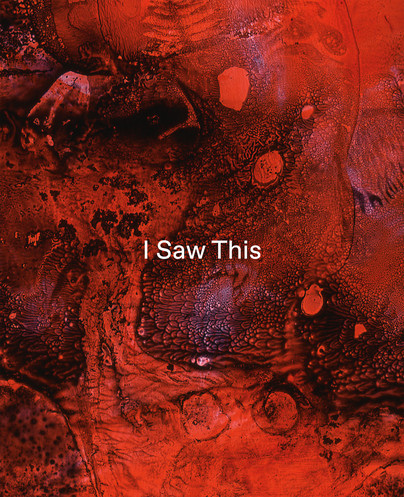
Format: Paperback
Pages: 192
ISBN: 9781910221501
Pub Date: 05 Oct 2023
Illustrations: 200
Description:
Tom de Freston (born 1983) is a British artist and writer, living and working in Oxford. He graduated from Cambridge University in 2007. De Freston’s multimedia art tackles themes of trauma, humanity and intimacy across paintings, films and performance.
He builds rich visual narratives, drawing on literature, art history and social issues. A prolific author, Granta published de Freston’s debut non-fiction book, Wreck, in 2022 and his second will be released in 2024. Julia and the Shark (Hachette, 2021), created with his wife Kiran Millwood Hargrave, won the Waterstones Children’s Gift of the Year and was shortlisted for the Wainwright Prize for Children’s Writing on Nature and Conservation. De Freston was chosen to illustrate the twenty-fifth-anniversary edition of David Almond’s Skellig, published in 2023.I Saw This was born out of a collaboration between de Freston, filmmaker Mark Jones and Dr Ali Souleman after de Freston was introduced to the academic in 2017. The paintings and mixed-media works that resulted from the project are an exploration into Souleman’s experiences of terrorism, displacement and war in Syria and ruminate on how art can attempt to represent suffering and terror. In 1996, a bomb explosion in Damascus on New Year’s Eve nearly killed Souleman and left him blind. A sensitive and highly-charged topic, Souleman explained to de Freston the importance of engaging with what is happening in Syria. Disembodied mouths, hands and feet appear frequently in the works. Circles recur as a motif, which bear an uncomfortable resemblance to eyes and eye sockets. In the Mirror paintings which stand upright in black boxes, de Freston embeds ash, screws, thick glue, dirt and bits of wood into the canvas. They are corporeal and volcanic, visceral and abstract. The sense of molten heat in the paintings was compounded by a fire in de Freston’s studio in 2020, which was simultaneously destructive while giving the artist and the collaboration new momentum. The collaborative process involves de Freston describing the paintings to Souleman through words and touch. Souleman brings fresh meaning to the works, grounding them in his psychological landscape. Mark Jones captures these interactions in striking photographs and film footage.Habda Rashid, Senior Curator of Modern and Contemporary Art at Kettle’s Yard and the Fitzwilliam Museum, introduces I Saw This and considers the challenges of incorporating elements from real life. Journalist Yasmina Floyer’s contribution describes her reaction to de Freston’s work at his 2022 exhibition From Darkness at No 20 Arts, London, where she found that the sooty-black feet stencils and inky circles depicted resonated with her own experience of child loss. The moving text shows how de Freston’s art carries both specific and universal meanings. Editor Matt Price focuses on de Freston’s paintings, structuring his essay with fascinating quotes from Abu al-Ala al-Ma’arri, the eleventh-century blinded Arab philosopher. Crucially, de Freston, Jones and Souleman’s voices are presentin the book, with each shedding light on their part in the project. De Freston’s art is rooted in empathy and I Saw This is a culmination of this, translating Souleman’s world of memory and metaphor.
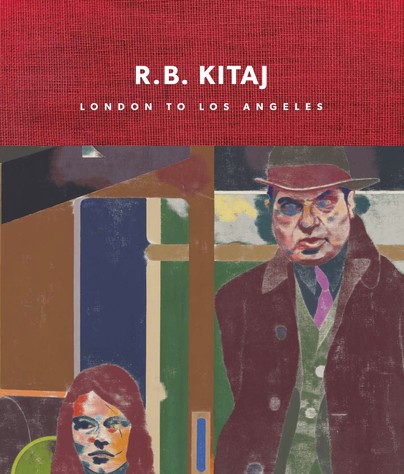
Format: Hardback
Pages: 184
ISBN: 9781901192643
Pub Date: 01 Oct 2023
Description:
R.B. Kitaj: London to Los Angeles explores the relationship between Kitaj’s art and the places where he lived.
This is the first significant publication about the artist in over a decade and provides a chronological overview of Kitaj’s career. Published to accompany Piano Nobile’s exhibition of the same title, it includes 43 paintings and drawings with catalogue entries containing original research, in many cases presenting new information about Kitaj's sources and sitters for the first time.The book contains three essays, which describe the artist's lives in London and Los Angeles. Andrew Dempsey recounts Kitaj’s relationship with artists, institutions and art critics during his thirty-eight-year period in London. Colin Wiggins, who worked with Kitaj on his National Gallery exhibition in 2001, writes about the artist’s last decade in Los Angeles. Marco Livingstone in his essay remembers the long correspondence he shared with Kitaj. A further section includes extended excerpts from Kitaj’s letters to Livingstone, which are now held by the Tate Archive and are published here for the first time.
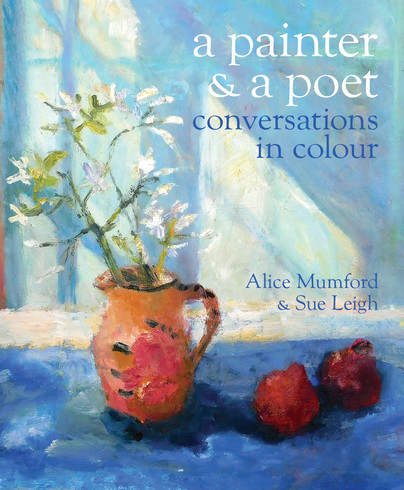
Format: Paperback
Pages: 96
ISBN: 9781915670069
Pub Date: 30 Sep 2023
Description:
This beautiful book, of paintings by Alice Mumford and poems by Sue Leigh, brings together exciting new work from the two makers. Collaboration is perhaps not the right word for a project in which paintings and poems sit side by side, each illuminating the other. Onlooker and reader are offered another glimpse, another view which may change the experience of looking and reading.
The book includes conversations between painter and poet in which they discuss their experience of working in their different media and consider the limitations and possibilities of each. They talk about their sources of inspiration, how they might choose a subject (or does it choose them?), and the process that surrounds the making of their work. What do they share in their creative lives and how do they differ? The work of these two contemporary artists celebrates the intimacy and beauty that can be found in our everyday lives.
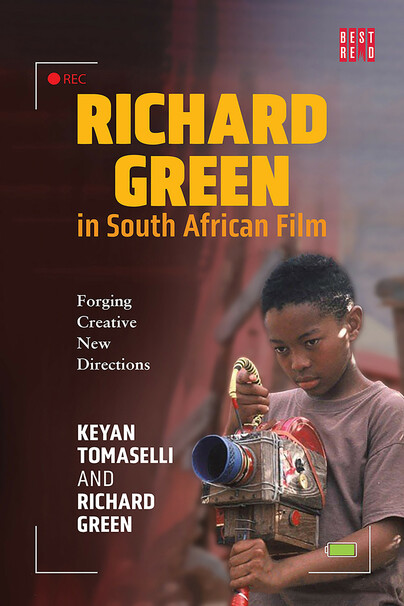
Format: Paperback
Pages: 276
ISBN: 9781928246602
Pub Date: 06 Sep 2023
Imprint: HSRC Press
Description:
"This is the first time I ever read an academic tome and felt—yelp—moved, touched, sad, and actually kind of cleansed and re-inspired." —Andrew Worsdale, South African actor, director, and journalist"This book combines so much useful material in film studies, it easily becomes an absolutely must have for students, directors, historians, theorists, stakeholders, audiences, government agencies, and so much more..
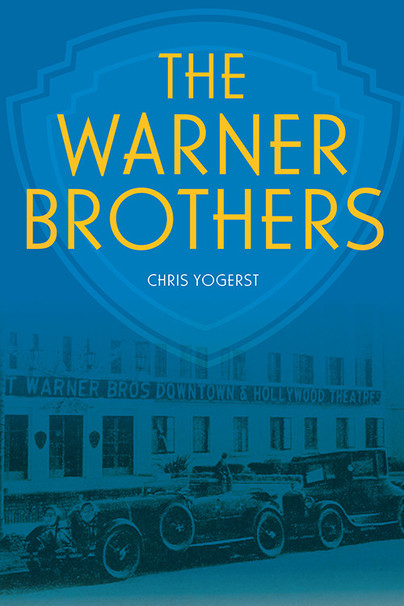
Format: Hardback
Pages: 360
ISBN: 9780813198019
Pub Date: 05 Sep 2023
Illustrations: 64 b&w illustrations
Description:
One of the oldest and most recognizable studios in Hollywood, Warner Bros. is considered a juggernaut of the entertainment industry. Since its formation in the early twentieth century, the studio has been a constant presence in cinema history, responsible for the creation of acclaimed films, blockbuster brands, and iconic superstars.
These days, the studio is best known as a media conglomerate with a broad range of intellectual property, spanning movies, TV shows, and streaming content. Despite popular interest in the origins of this empire, the core of the Warner Bros. saga cannot be found in its commercial successes. It is the story of four brothers - Harry, Albert, Sam, and Jack - whose vision for Hollywood helped shape the world of entertainment as we know it.In The Warner Brothers, Chris Yogerst follows the siblings from their family's humble origins in Poland, through their young adulthood in the American Midwest, to the height of fame and fortune in Hollywood. With unwavering resolve, the brothers soldiered on against the backdrop of an America reeling from the aftereffects of domestic and global conflict. The Great Depression would not sink the brothers, who churned out competitive films that engaged audiences and kept their operations afloat - and even expanding. During World War II, they used their platform to push beyond the limits of the Production Code and create important films about real-world issues, openly criticizing radicalism and the evils of the Nazi regime. At every major cultural turning point in their lifetime, the Warners held a front-row seat.Paying close attention to the brothers' identities as cultural and economic outsiders, Yogerst chronicles how the Warners built a global filmmaking powerhouse. Equal parts family history and cinematic journey, The Warner Brothers is an empowering story of the American dream and the legacy four brothers left behind for generations of filmmakers and film lovers to come.

Format: Paperback
Pages: 440
ISBN: 9780993033964
Pub Date: 21 Aug 2023
Illustrations: 66 black and white and colour illustrations, and 704 colour photographs
Description:
This book provides a comprehensive guide with detailed explanations, illustrations and photographs of late-7th century to 11th century Anglo-Saxon Churches and stone sculpture. It is divided into four parts.The first part includes an extensive glossary explaining the terms likely to be encountered, it explains Celtic and Roman Church practices and the Synod of Whitby, how Anglo-Saxon churches were established and their plans, and also provides a summary to the settlements of the Anglo-Saxons, Vikings and Hiberno-Norse in England.
The second part provides a comprehensive description of the construction and architectural features of extant Anglo-Saxon Churches including their walling, plinths and quoining, archways, doorways, windows and belfry-openings of whatever shape or format or wherever their location. It also explains features such as string-courses, pilaster-strips, pilaster-buttresses, hood-moulding and strip-work. Also included are extant Anglo-Saxon stairways and crypts. Explanations are included on porticus, galleries, the use of rooms in towers, roofs, church seating and other furnishing, balusters and baluster-shafts.The third part provides a comprehensive description of Anglo-Saxon and Anglo-Scandinavian Decoration on stonework. It details all the designs and patterns involved including those which also have scenes depicting creatures, beasts, birds, serpents and humans, figures, and scenes from Christianity and Norse Mythology. It explains and provides examples of the stonework on which these designs and patterns appear namely standing crosses, cross-heads, cross-shafts and cross-bases; grave-markers, grave-covers, grave-slabs and grave-memorials and crosses; sarcophagi and shrine chests; wall friezes and wall panels; fonts; and sundials. The fourth part provides an alphabetical list of 183 recommended churches and museums with summarised information on their individual architectural features, and/or stone sculpture. Many of the churches are further expanded in detail in the text in the second and third parts. Also provided is a page and photographic index of all the churches and museums where they are referred to in the text. All the places referred to in the text have been personally visited by the author.
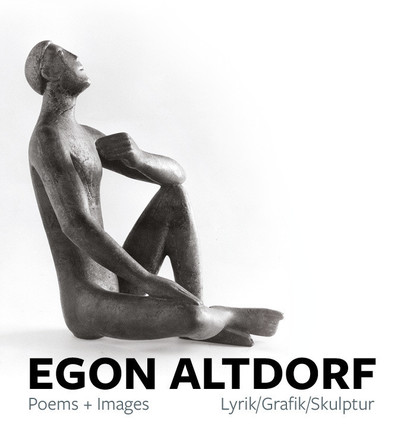
Format: Paperback
Pages: 112
ISBN: 9781915670120
Pub Date: 11 Aug 2023
Description:
Altdorf’s earliest poems, written during military service and as a prisoner of war, reflected on nature, poetry and art. Beginning a new life, post-war, as an artist, Altdorf explored how the human figure might be depicted through increasingly abstract representations. Similarly, he refined his poetry to create ‘a new, free, melodic’ language’ with ‘a simple, song-like beauty’.
Presenting Altdorf’s poetry alongside his art reveals a powerfully interconnected vision shaped but not defined by war: a humanitarian outlook informed by a profound spiritual belief.
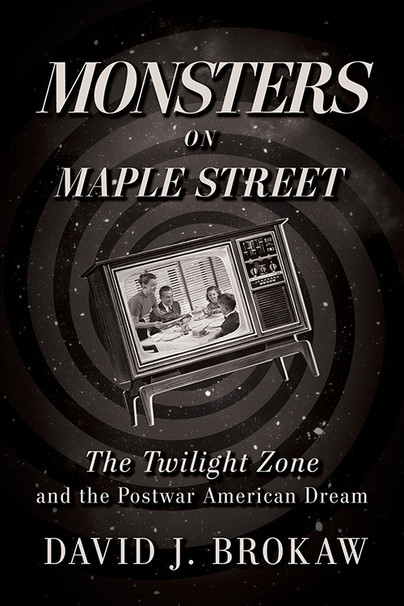
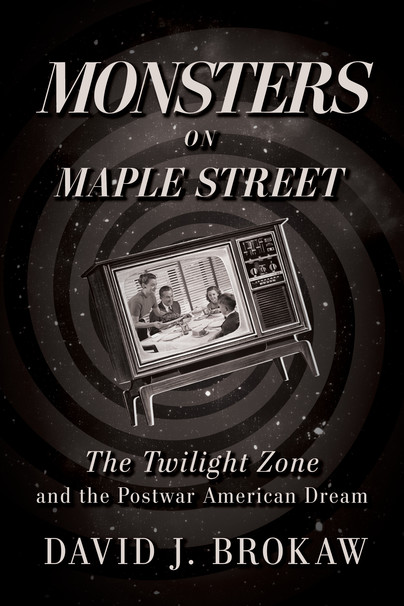
Pages: 280
ISBN: 9780813197845
Pub Date: 08 Aug 2023
Illustrations: 33 b&w illustrations
Pages: 280
ISBN: 9780813199276
Pub Date: 08 Aug 2023
Illustrations: 33 b&w illustrations
Description:
Post-World War II America has often been mythologized by successive generations as an exceptional period of prosperity and comfort. At a time when the Cold War was understood to be a battle of ideas as much as military prowess, the entertainment business relied heavily on subtle psychological marketing to promote the idea of the American Dream. The media of the 1950s and 1960s promoted an idealized version of American life sustained by the nuclear family and bolstered by a booming consumer economy.
The seemingly wholesome and simple lifestyles portrayed on television screens, however, belied a torrent of social, economic, and political struggles occurring at the time. By the late 1950s, television writers were increasingly constrained to distract audiences from confronting counternarratives to the Dream. Among the programs that railed against this trend was Rod Serling's television masterpiece The Twilight Zone. Now considered an enduring classic, the allegorical nature of the show provides a window into the many overlooked issues that plagued Cold War America. In Monsters on Maple Street: The Twilight Zone and the Postwar American Dream, David J. Brokaw describes how the TV show reframed popular portrayals of white American wish fulfillments as nightmares, rather than dreams. Brokaw's close reading of the show's sociopolitical dimensions examines how the series' creators successfully utilized science fiction, horror, and fantasy to challenge conventional thinking – and avoid having their work censored - around topics such as sexuality, technology, war, labor and the workplace, and white supremacy. In doing so, Brokaw helps us understand how the series exposed the underbelly of the American Dream and left indelible impressions in the minds of its viewers for decades to come.
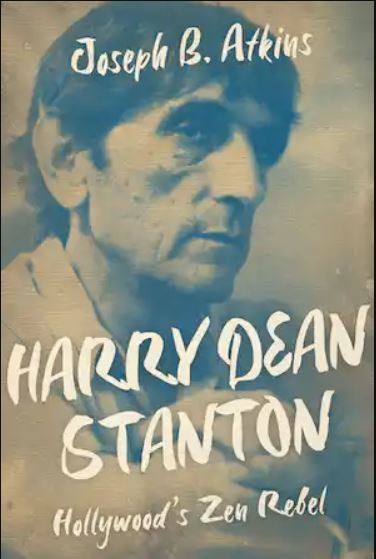
Format: Paperback
Pages: 278
ISBN: 9780813197722
Pub Date: 01 Aug 2023
Illustrations: 16 b&w halftones
Description:
Harry Dean Stanton (1926-2017) got his start in Hollywood in TV productions such as Zane Grey Theater and Gunsmoke. After a series of minor parts in forgettable westerns, he gradually began to get film roles that showcased his laid-back acting style, appearing in Cool Hand Luke (1967), Kelly's Heroes (1970), The Godfather: Part II (1974), and Alien (1979). He became a headliner in the eighties - starring in Wim Wenders's moving Paris, Texas (1984) and Alex Cox's Repo Man (1984) - but it was his extraordinary skill as a character actor that established him as a revered cult figure and kept him in demand throughout his career.
Joseph B. Atkins unwinds Stanton's enigmatic persona in the first biography of the man Vanity Fair memorialized as "the philosopher poet of character acting." He sheds light on Stanton's early life in West Irvine, Kentucky, exploring his difficult relationship with his Baptist parents, his service in the Navy, and the events that inspired him to drop out of college and pursue acting. Atkins also chronicles Stanton's early years in California, describing how he honed his craft at the renowned Pasadena Playhouse before breaking into television and movies.In addition to examining the actor's acclaimed body of work, Atkins also explores Harry Dean Stanton as a Hollywood legend, following his years rooming with Jack Nicholson, partying with David Crosby and Mama Cass, jogging with Bob Dylan, and playing poker with John Huston. "HD Stanton" was scratched onto the wall of a jail cell in Easy Rider (1969) and painted on an exterior concrete wall in Drive, He Said (1971). Critic Roger Ebert so admired the actor that he suggested the "Stanton-Walsh Rule," which states that "no movie featuring either Harry Dean Stanton or M. Emmet Walsh in a supporting role can be altogether bad."Harry Dean Stanton is often remembered for his crowd-pleasing roles in movies like Pretty in Pink (1986) or Escape from New York (1981), but this impassioned biography illuminates the entirety of his incredible sixty-year career. Drawing on interviews with the actor's friends, family, and colleagues, this much-needed book offers an unprecedented look at a beloved figure.
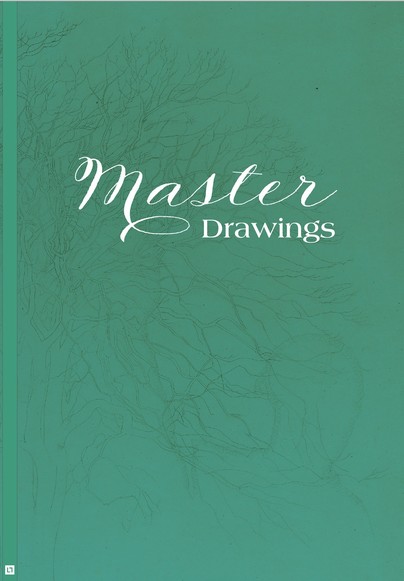
Format: Paperback
Pages: 104
ISBN: 9781999314590
Pub Date: 15 Jul 2023
Description:
‘Drawings’ is a collaborative venture combining two exhibitions that have been timed to coincide: British Drawings: 1890-1990 at Sotheran’s and Drawings 1990-2022 at Purdy Hicks Gallery. Both shows emphasise the importance of drawing to artists of the last 120 years: though many of the artists have used myriad other art forms, they have invariably returned to the honesty of drawing, time and time again.The artists reflect their times.
The artists from 1890-1980 are very much associated with strong schools of thought. One school in particular, the Slade School of Fine Art, dominates. Its rigorous process of drawing underpins much that we see, but is of course interpreted differently artist by artist. There was most definitely a British School, and in terms of drawing its greatest, though largely unacknowledged, triumph can be found in the remarkable works produced by the artists of the British School at Rome with their use of drawing techniques dating back to the Renaissance. This catalogue contains outstanding examples by Winifred Knights, Evelyn Gibbs, Anne Newland, Thomas Monnington, Robert Austin, Alan Sorrell and Reginald Brill. Slade student Winifred Knights exemplified the teachings of Henry Tonks, (Professor of Fine Art at the Slade from 1918 to 1930), with her observation of nature and meticulous methodology, working through endless studies, which were in turn painstakingly transferred to create finished works. Gilbert Spencer, another of the Professor’s students, recalled how Tonks talked of dedication, the privilege of being an artist, that to do a bad drawing was like living with a lie, and he proceeded to implant these ideals by ruthless and withering criticism. I remember once coming home and feeling like flinging myself under a train, and Stan telling me not to mind as he did it to everyone.Methodology aside, many of the artists in this catalogue share common traits – an obsession with the minutiae of nature, an unbreakable attachment to landscape, an immersion in the narrative tradition, and an inability to resist humour and affection for the quirky and mundane.
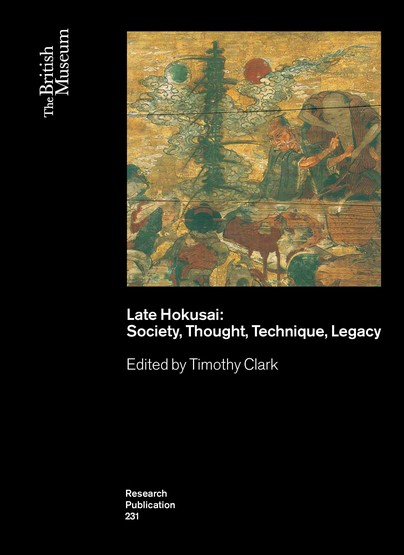
Format: Paperback
Pages: 250
ISBN: 9780861592319
Pub Date: 15 Jul 2023
Series: British Museum Research Publications
Illustrations: 170
Description:
This publication has been developed from ideas first presented at the international symposium Late Hokusai: thought, technique, society, held at the British Museum in May 2017. The symposium was organised to enable specialists in a range of disciplines relating to early modern Japan to view and consider the critically acclaimed exhibition Hokusai: beyond the Great Wave, then being presented at the British Museum. The exhibition brought together representative works by the artist Katsushika Hokusai (1760−1849) in the various media in which he worked – colour woodblock printed, woodblock-printed illustrated books, brush paintings on paper or silk, and brush drawings − that were produced between the age of 61 and his death aged 90.
Building on the themes of the exhibition, authors from the UK, Europe, Japan and USA have engaged with late Hokusai from a variety of perspectives, both intrinsic and extrinsic to his life and works. Essays have been grouped within the broad categories of ‘thought’ -- Hokusai’s intellectual concerns and the ways his art brought these to life; ‘technique’ – how the artist pursued excellence in a wide range of media, within a commercialised art market; and ‘society’ – dimensions of cultural interaction and patronage. A fourth section on ‘legacy’ looks at how stories of Hokusai have been as much generated by 130 years of scholarship, as they have by his works themselves. Challengingly, faked paintings and printed works have both contaminated and supported those stories. This innovative approach provides new insights into the work of one of the world’s most celebrated artists and suggests many new avenues for Hokusai research.
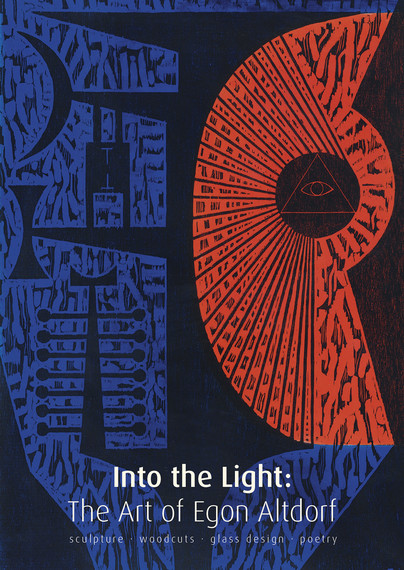
Format: Hardback
Pages: 192
ISBN: 9781915670083
Pub Date: 15 Jun 2023
Description:
From sculpture to woodcuts, glass design to poetry, the work of German artist Egon Altdorf crossed boundaries. ‘Making culture behind the barbed wire’ was how Altdorf endured wartime captivity, inspiring a life dedicated to art that was innovative, spiritual and redemptive. Exhibiting in London alongside sculptors Barbara Hepworth, Lynn Chadwick and Reg Butler at the Unknown Political Prisoner exhibition (1953), he adopted an increasingly abstract approach, rooted in Biblical symbolism yet embracing different faiths, notably in designs for the outstanding interior of Wiesbaden’s new synagogue.
Exploring Altdorf’s work in ten interdisciplinary chapters, this book illuminates the still-overlooked contribution of artists who reshaped postwar existence: the lost generation.


















